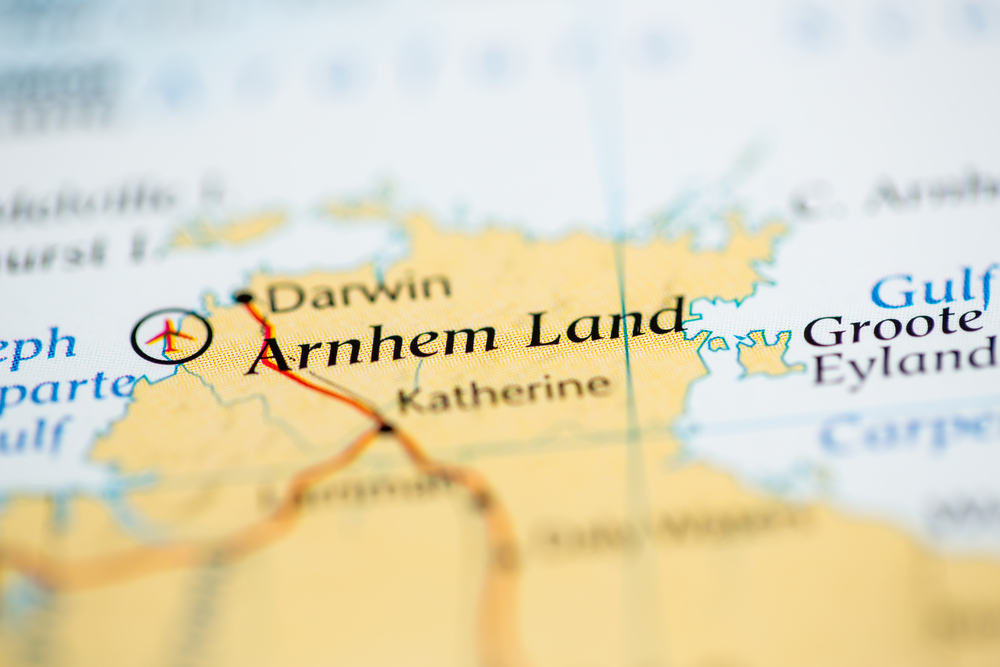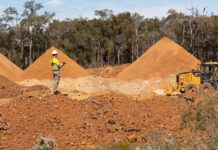From exclusion to partnership: lessons from mining at Gove

In 1963, Dr G Yunupingu, the late visionary Gumatj clan leader, stood alongside his father, Munggurrawuy Yunupingu, at what he described in 2008 as the first mining agreement on the Gove Peninsula.
This followed then Prime Minister Robert Menzies’ announcement that the Federal Government would grant bauxite mining leases at Gove without consulting Traditional Owners — marking the beginning of decades of political engagement and advocacy demanding the respect and recognition that the Yolngu People deserved.
The issue remained unresolved until mid-2007, when Rio Tinto (ASX: RIO) acquired the miner operating on Country at the time.
Previously, in 1997, Rio Tinto’s then chief executive Leon Davis had distinguished the company by famously committing to engage with the new Native Title Act 1993 — embracing the right to negotiate provisions that many other miners resisted.
After three years of negotiation with the Gumatj, Rirratjingu and Galpu landowners and the Northern Land Council (NLC), a historic agreement was reached to extend the mining leases for a further 42 years.
The agreement was a landmark moment for the future of sustainable economic development that also protected local culture. Beyond just capital gain, it created jobs for Yolngu people across the region and opened opportunities for Indigenous-owned businesses to engage as contractors on projects.
Now, on the most north-easterly extremity of the Northern Territory, the world’s first and only wholly Indigenous owned and operated bauxite miner, Gulkula Mining Company (GMC), produces hundreds of thousands of tonnes of the red mineral each year.
A new report published in collaboration between The University of Queensland’s Sustainable Minerals Institute (SMI) and the Gumatj Corporation, and supported by Rio Tinto, documents GMC’s decades-long journey focusing on the Indigenous perspectives and experiences that come from an Indigenous-owned mine.
Spearheading change
The report outlines how Dr G Yunupingu pioneered the formation of the world’s first Indigenous bauxite mining company.
Dr G Yunupingu participated in the first native title litigation in Australian history and was named Australian of the Year in 1978 for his role in land negotiations for Ranger uranium mine and Kakadu National Park.
In 1963, alongside other clans’ leaders — including Rirratjingu clan leader and Yirrkala Council chair Roy Dadaynga Marika — Dr G Yunupingu saw the beginning of the unilateral land taking for mining without Traditional Owner consent.
This was fundamentally at odds with Yolngu expectations based on past diplomatic and economic relationships with outsiders. An example of such relationships was the Yolngu’s longstanding trade with the Macassan traders from neighbouring Indonesia, which was fostered in diplomacy, reciprocity and negotiated exchange.
Determined to make the government understand that their ownership of the land remained unceded, Yolngu leaders insisted that consultation and consent of the Traditional Owners must precede any development.

Indigenous enterprise
Bauxite was first discovered in Eastern Arnhem Land in 1952 and, in the post WWII era, facilitated the Federal Government’s push to establish a domestic aluminium industry.
The Gulkula mine is located near Rio Tinto’s Gove bauxite project and supplies Rio with high-quality bauxite ore for export through its operations. The Gove site, acquired by Rio in 2007, has been supplying the global aluminium industry for more than 40 years.
At the time of acquisition, Rio Tinto was regarded as an industry leader in Indigenous agreement making. The company expressed increasing interest in developing a regional agreement covering future local sources of bauxite as well as a desire to resolve many outstanding sources of Traditional Owner concern.
UQ SMI research project manager and principal author Rodger Barnes says the report contributes to broader research on Indigenous equity and ownership in mining projects, as well as the risks and opportunities for promoting self-determination.
“This transition from grappling at the margins of the mining economy to leading their own company is both a historical reckoning and a model for Indigenous empowerment elsewhere,” he said.
Following the agreement to extend mining leases with Rio Tinto, Gumatj Corporation chief executive Klaus Helms worked with the board to form the GMC on November 15, 2011, as a wholly owned for-profit business to mine bauxite resources on the Dhupuma Plateau.
At the opening of the Gulkula mining project and mining training centre in 2017, a bauxite sales agreement confirmed that Rio Tinto would purchase bauxite from GMC — evolving Rio’s role from a partner supporting capacity-building to a customer.
Mr Helms says collaborating with UQ researchers on the development of the report helped to cement the lessons learned along this journey.
“I believe other mines should look at this as an example — Australian companies should look at joint venture partnerships or shareholding, so it doesn’t just turn into handouts,” he said.
From a social responsibility in mining perspective, the Gulkula story highlights the outcomes possible when innovative approaches to Indigenous landowner participation are pursued in industrial operations.
Local community, global mining
Building on the relationship and trust established, in October 2024, Rio Tinto signed a memorandum of understanding (MOU) for Gulkula to contract mine the remaining bauxite resources on Rio Tinto’s nearby mine site.
Rio Tinto Gove general manager Shannon Price comments on the company’s long involvement with the evolution of Gulkula.
“In 2011, Rio Tinto had signed the Gove Traditional Owners agreement with the Gumatj, Rirratjingu and Galpu Traditional Owners before, through subsequent engagement with Gumatj, becoming a customer of the Gulkula mine in 2018,” she said.
“In May 2018, senior Traditional Owners of the Gumatj clan witnessed the first shipment of their bauxite to China from Rio Tinto’s export wharf at Gove.
“We spend about $94m each year on a wide range of goods and services provided by local Indigenous businesses including earthworks and construction, fencing, maintenance, waste management, heritage services and environmental and land rehabilitation services.”
Looking to the future
The Australian Human Rights Commission says failure to appropriately address resettlement, native title and traditional land use issues generates strong public opposition and damages social license.
The importance of ensuring a strong social license to operate on Country and facilitate mutually acceptable outcomes is well understood and Indigenous engagement in the resources sector continues to evolve.
Gulkula Mining’s story represents a reassertion of sovereignty over land and resources. From decision-making exclusion, environmental and cultural disruption to control and cultural integrity, the case of Gulkula Mining and the Yolngu experience is a remarkable story of dispossession followed by reclamation.
The Gumatj Corporation has established the Gulkula Regional Training Centre with funding support from Rio Tinto and the Australian and Northern Territory Governments, which allows local Indigenous people to receive on-the-job training to build careers in mining and other related industries.
Even as bauxite mining declines in the area, the impact of Gulkula Mining continues to reclaim a sense of agency, restore land and foster opportunity for future generations.






















